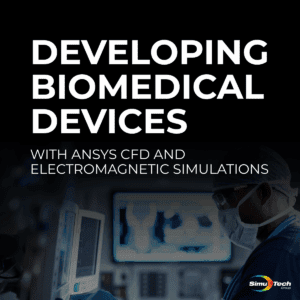Optics and Lighting Optimization | Ansys SPEOS Webinar:
With Ansys SPEOS optics and lighting optimization, engineers can quickly and easily combine lighting performance modeling with extensive, optical element libraries with corresponding optimization capabilities.

Designing Double-Surface Refractive Optical Elements
In this webinar, our engineers present and discuss a technique for building optical elements that, in the case of an extended light source, produce prescribed non-axisymmetric irradiance distributions from two freeform refracting surfaces.
The technique is based on the bicubic spline description of the optical surfaces and the subsequent quasi-Newton method optimization of their parameters.
Expanding Optics and Lighting Optimization
We provide an effective variation of the ray tracing approach for the quick calculation of the merit function. We create optical components that produce consistent square-shaped irradiance distributions in the far- and near-field using the suggested methodology.
The planned components are incredibly small (the height-to-source ratio is only 1.5). In addition, provide highly uniform distributions while offering a high illumination efficiency of 89%. (the ratio between minimum and average irradiance values in the prescribed square-shaped region exceeds 0.9).
Inverse Design Difficulties for Optical Elements
In fact, from a theoretical standpoint, inverse difficulties of constructing optical elements operating with extended light sources are much more difficult than the comparable point-source problems.
Only a few methods, such feedback design strategies, have been suggested to address these issues. This comprises edge-ray approaches and methods that can be referred to as “direct optimization methods” (since they utilize the edge-ray principle for controlling the generated distribution).
The feedback design approaches start with a point-source solution and progressively modify it to fit a genuine extended light source.
Additional Ansys Software Tips & Tricks Resources
-
- Analyzing normal and Tangential Elastic Foundations in Mechanical
- Why Meshing is Crucial for FEA Fluid Simulations Prior to Prototyping
- For support on Contained Fluid FEA Modeling with HSFLD242 Elements
- For Exporting a Deformed Geometry Shape Post-Analysis in Mechanical
- Moreover, for guidance Multi-Step Analyses in Mechanical
- For Retrieving Beam Reaction Force in a Random Vibration Analysis
- Deploying Ansys Macro Programming vis *USE Command in Mechanical
- For replicating Fatigue Models from Start to Finish in Mechanical
- In addition, setting up Acoustic Simulations of a Silencer
- For a step-by-step guide on 2D to 3D Submodeling in Mechanical
- For modeling Pipe16 Circumferential Stress in Mechanical
- For Support on performing ‘EKILL‘ in Workbench
- APDL Command Objects post-Spectral Analysis
- For Separating DB Database Files from RST Files
- Measuring Geometric Rotation in Mechanical WB
- Explicitly, CAD Geometry Deformation Plasticity
- Offsetting a Temperature Result to Degrees Absolute
- For general guidance on Ansys Post-Processing
- Finally, for basic Ansys Software Installation and License Manager Updates







